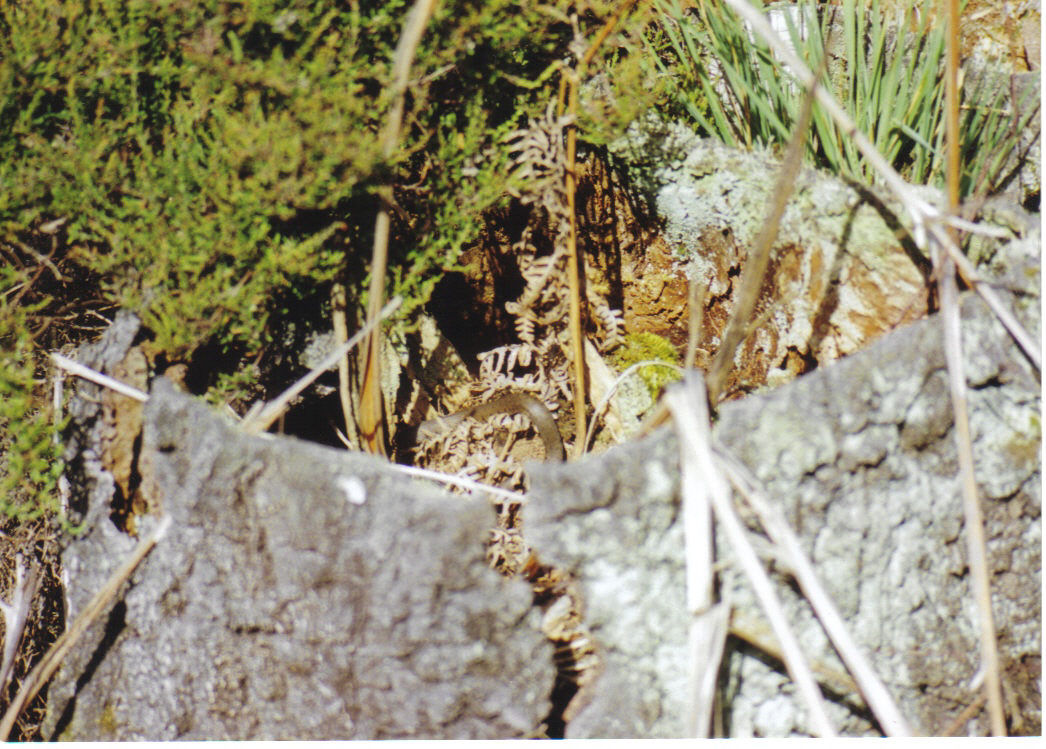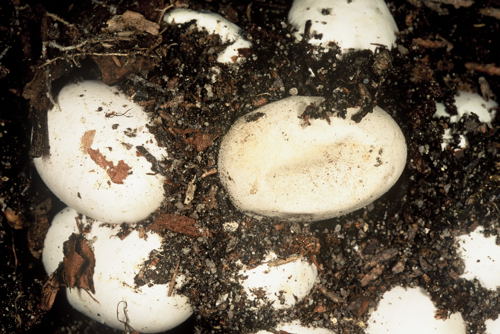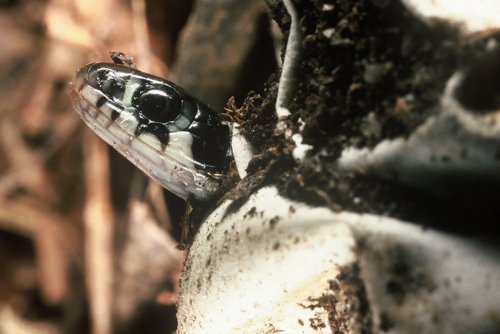 |
 |
Egg laying sites: |
| Author | Message |
|
Paul Hudson Member Joined: 24 Sep 2004 No. of posts: 33 View other posts by Paul Hudson |
Posted: 16 Aug 2009 Hi , Does any one on this forum have any experience of constructing an egg laying site for natrix ? I would like to know what time of year is best for construction ? best materials to use ? size ? etc also has any one discovered a natural nest site ? surely not all animals will find compost/dung heaps . Thanks in advance Paul Hudson
Paul Hudson |
|
Suzi Senior Member Joined: 06 Apr 2005 No. of posts: 860 View other posts by Suzi |
Posted: 16 Aug 2009 I know they will lay eggs in sawdust heaps ( evidence from a sawmill on an estate in Dorset over 30 years ago). Also might they like heaps of reeds/vegetation left high and dryish after floods/high water by a stream/river/pond? Maybe also piles of bracken which you sometimes see as a natural occurrence. Suz |
|
Mark_b Senior Member Joined: 26 Jun 2008 No. of posts: 79 View other posts by Mark_b |
Posted: 17 Aug 2009 South & West Wales ARG has done quite a few egg laying sites now Time of year isnt vital as it will take the pile quite a while to mature. The only constraint is not to disturb or damage a habitat while making it, if that may occur then do it during winter I say! We have used manure at one site and woodchip at another. I believe its best to make a log/brash/rubble pile as the base, so there are lots of spaces, then pile the material that wil decomose and create the vital heat for the incubation of the eggs. You could also pile some materail down first then the space makers, then more material..... Or just a big pile of manure/woodchip, rodents will make tunnels and spaces eventually Bigger the better for sure! More heat, more places that may have the perfect temperature they wish etc Suzi mentioned piles of vegetation after floods/high water and .... Corbett, K., 1989. Conservation of European Reptiles and Amphibians.
Also says this is the likely areas grass snakes used before man-made egg laying sites
Hope that helps
edit// also also consider placement of the egg layig site as if its made of manure it will be nutrient rich and may pollute a pond and/or change the nutrient balance in the soil (which will affect which plants grow) 
|
|
herpetologic2 Senior Member Joined: 15 Jun 2004 No. of posts: 1369 View other posts by herpetologic2 |
Posted: 17 Aug 2009 grass snakes lay their eggs in a variety of situations. plant pots on patios, beside sunny walls, within grass tussocks, in rotting logs, rotting seaweed on strand lines etc. I have seen local garden compost heaps heaving with grass snakes during May and June. If you want the snakes to find your egg laying site site the heap along a corridor such as a hedge line or dry ditch line - snakes move through the environment along these features so therefore I would suggest that this would make detection more likely. Experiment with a variety of materials - locally cut grass, straw bales, seaweed, algae, manure can all be mixed up and used. Suffolk ARG have had great success of using these piles with plastic over the top of the pile. Freshly made wood chip is very attractive to snakes. Again in Suffolk a tree worker reported that the pile of wood chip from freshly cut timber was crawling with snakes that summer. However the pile soon cools down and is not used again the following year when fresh material is not added. J Vice Chair of ARG UK - self employed consultant - visit ARG UK & Alresford Wildlife |
|
JohnBaker Member Joined: 21 Nov 2003 No. of posts: 5 View other posts by JohnBaker |
Posted: 17 Aug 2009 Paul, Suffolk ARG/Anglian Water produced a note on egg-laying sites. It's a bit basic, but I've just added it to the ARG website publications page http://www.argukjb.org.uk/Publications.htm 'other publications'. There was a photograph of a grass snake egg laying site in a tree stump accompanying an article in British Wildlife over the last year or so. But I can't find it now. Probably an article on veteran trees. Anyway, an example of a 'natural' egg-laying site - if anyone else can remember the reference... John Baker John Baker |
|
Paul Hudson Member Joined: 24 Sep 2004 No. of posts: 33 View other posts by Paul Hudson |
Posted: 18 Aug 2009 Thanks for the info guys
Paul Hudson Paul Hudson |
|
Robert V Senior Member Joined: 06 Aug 2004 No. of posts: 717 View other posts by Robert V |
Posted: 05 Sep 2009 Paul, I think the diagram that John Baker is referring to comes from my book, the British Grass Snake and see below. I've also included a pic of the stump as it would look given a few years and if you look hard enough (soory about the quality but it caught me off guard as it hatched six days early!) you'll see a newly hatched neo taking its first slithers around the world. Rob RobV |
|
Robert V Senior Member Joined: 06 Aug 2004 No. of posts: 717 View other posts by Robert V |
Posted: 05 Sep 2009 here  RobV |
|
JohnBaker Member Joined: 21 Nov 2003 No. of posts: 5 View other posts by JohnBaker |
Posted: 06 Sep 2009 Found it. There's a photograph of grass snake eggs in a hollow stump in British Wildlife 18 (1) October 2006 p23. I don't think there's anything in the text of the accompanying article, though. John Baker John Baker |
|
armata Forum Specialist Joined: 05 Apr 2006 No. of posts: 928 View other posts by armata |
Posted: 09 Sep 2009 These eggs were in Bracken mulch at Norden, Purbeck. They were on the point of hatching, late August 1994. 
 'I get my kicks on Route 62' |
|
Jonathan Senior Member Joined: 08 Sep 2009 No. of posts: 68 View other posts by Jonathan |
Posted: 09 Sep 2009 There is a sight not too far from me along the canal that has a huge rotting silver birch tree in a ditch. I've been collecting the birch polypore off there for the last couple of years for bushcrafty stuff and last year (September) found old hatched eggshells in the punk on the side facing away from the tow path. I've not had chance to check it out this year, but as this thread has spurred my memory I'll make a point of it in the next few days. "England Expects" |
- Egg laying sites |